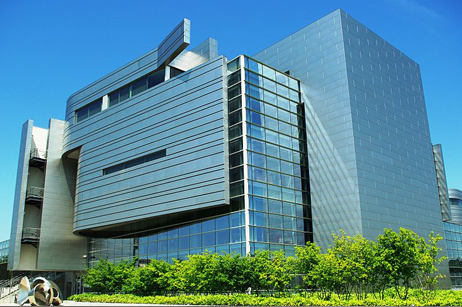Wayne L. Morse United States Courthouse

Energy efficient and sustainability features designed into the project led to a Gold LEED certification from the U.S. Green Building Council. Elements that led to this include landscaping that reduces runoff from rainwater, lots of natural light, a more efficient HVAC system that is located under the floors, and a location near public transit. Landscaping includes using drought resistant native species to reduce the need for irrigation. The floor-based HVAC system is more energy efficient and helps keep the temperature of the entire building more even and uses radiant heating and cooling. Additionally, the construction used environmentally friendly sealants, carpets, paints, and adhesives as well as preventing 90% of the construction waste from entering landfills. Also, potable water usage is reduced by 40% due to the use of low-flow sinks, showers, and toilets. The contractor also recycled 90% of the materials from the building that previously occupied the site.
In addition to the LEED certification, the building also won a Progressive Architecture Award in 2004 from Architecture magazine and AIA/COTE award from Architect magazine in 2007. The Chicago Athenaeum also gave the design an award in 2007 as part of its American Architecture Awards. The Morse Courthouse was also the first U.S. courthouse included at the Venice Biennale of Architecture. The Oregonian newspaper called the courthouse “the most architecturally important new building in Oregon in decades”.


